Introduction to magnetism
Key points
Invisible magnetic fieldThe region around a magnet where a force may be felt. can be revealed with iron filings.
Eye protection is important when using iron filings.
Plotting compasses can be used to investigate the shape of a magnetic field.
A video about magnetism
A video that shows how invisible magnetic fields attract certain metals, and how iron filings can be used to see them
Magnetism is the force that magnets produce.
Every magnet has a north pole and a south pole.
Poles that are different such as this north and this south pole attract.
And poles that are the same, like these two north poles, repel.
See how they are pushing each other away?
Most materials are not attracted to a magnet – because they’re not magnetic but the metal elements iron, nickel and cobalt are magnetic.
All magnets are surrounded by an invisible magnetic field and any magnetic material, like this paper clip, that is in the field will experience a magnetic force.
You can see that even though it isn't touching the magnet, the paperclip is still attracted to it, keeping the paperclip in the air. This is because magnetism is a non-contact force; the objects don't need to touch to experience this force.
Let’s have a better look at what that magnetic field looks like.
These iron filings are attracted to the magnetic field so they line up on it, showing us the shape of the magnetic field.
You can see that the field is made up of lines that come from the north pole and loop around the magnet to the south pole. The lines are closer together at the poles, making it stronger here, which is why there are more iron filings at both ends.
Even though all magnets behave in a similar way not all magnets look the same. In fact, our planet Earth has a magnetic field with a North Pole and a South Pole.
For thousands of years people have been able to use the Earth’s magnetic field to find their way around the globe using one of these.
The needle of a compass, like this one, is a small magnet. So, no matter where you go in the world the needle will always be attracted to, and point to, the Earth’s North pole.
In this compass the needle is attached underneath to this black section with numbers on it, and that's why we see the black section moving.
Ok, I think it’s… this way!
Experimenting with magnets
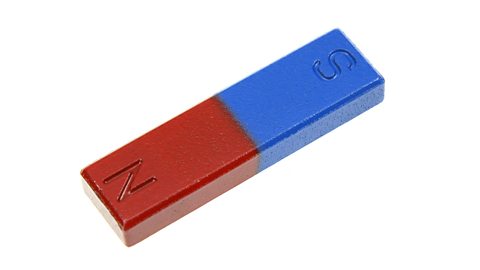
Magnetic fields are invisible. We need a way to reveal them to check their shape and investigate their properties so that we can better understand how they work and how we might use them.

Method 1- iron filings
Iron filings are tiny bits of iron that can be sprinkled around the magnet. These will line up with the magnetic field, showing its shape.
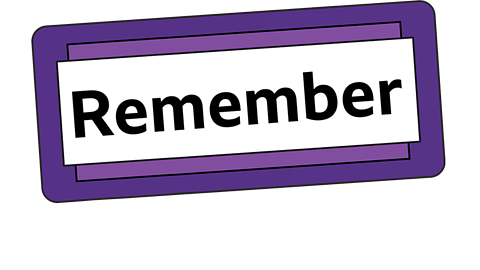
Goggles must be worn when using iron filings. They are very sharp and must be kept away from your eyes.
It can be tricky to get the iron filings back off a magnet so put the magnet under a piece of paper to separate it from the filings.
Carefully sprinkle iron filings on top of the paper. Add them slowly as it can be difficult to see the pattern if you have too many filings.
Gently tap the paper. This makes the iron filings ‘jump’ which allows them to line up with the magnetic field lines.
Remember to take a picture or draw the pattern you see so that you have a record of your results.
When you are finished, use the paper to tip the filings back into your container and clear away any left overs.
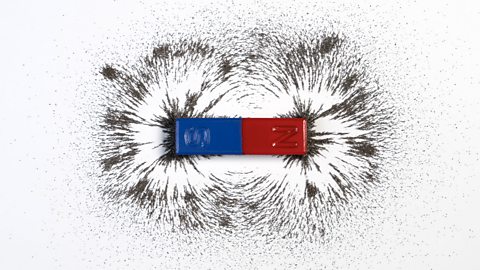
Method 2- plotting compasses
The other way to show the shape of a magnetic field is with a compassA device with a magnetised needle. The needle turns to line up with a magnetic field.. A compass needle will line up with the magnetic fieldThe region around a magnet where a force may be felt. of any magnet.
When dealing with fairly small magnets, it can be helpful to use mini compasses called plotting compasses.
Have a look through the slide show to find out more about using plotting compasses to show the shape of a magnetic field.
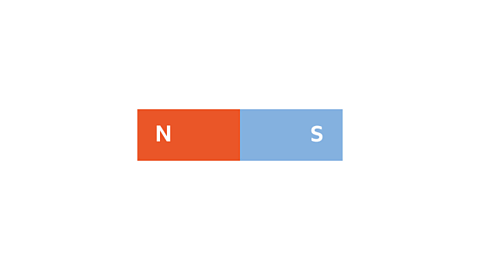
Image caption, Step 1
Place your magnet in the centre of your paper
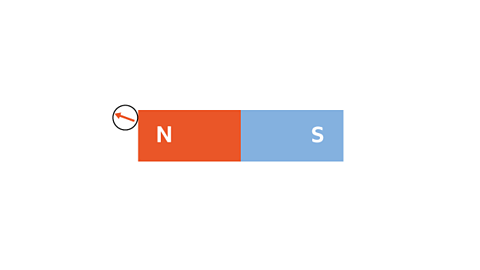
Image caption, Step 2
Place your plotting compass at one end of the magnet, slightly to the side
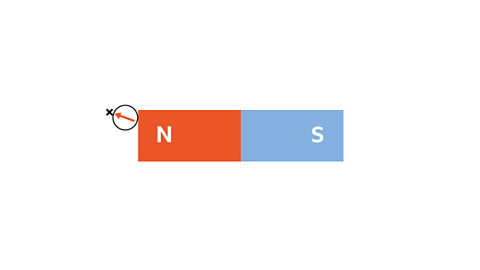
Image caption, Step 3
Use a pencil to mark where the end of the needle points
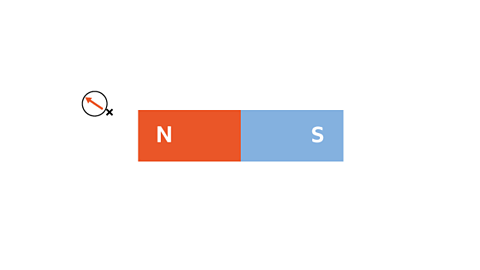
Image caption, Step 4
Move the compass so that the back of the needle is on your mark, then mark where the other end of the needle is now
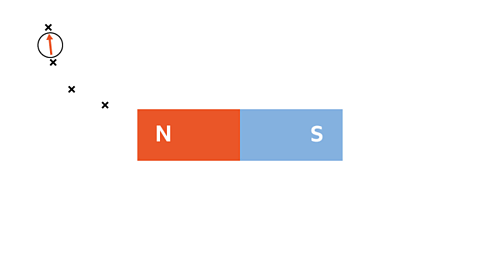
Image caption, Step 5
Repeat step 4 until you come to the other end of the magnet or reach the end of the paper
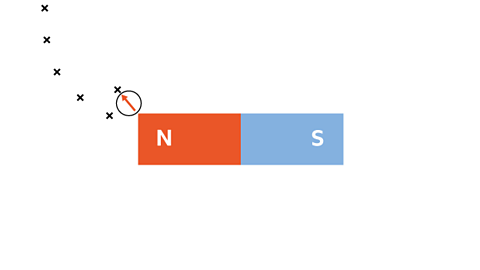
Image caption, Step 6
Repeat from step 2, starting at a slightly different position at the end of the magnet
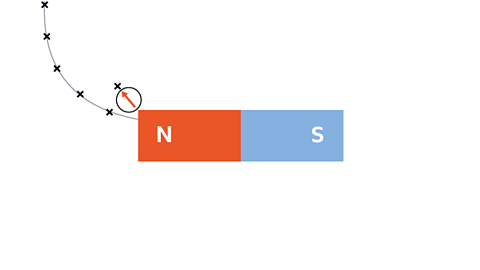
Image caption, Step 7
Join the marks (X) together
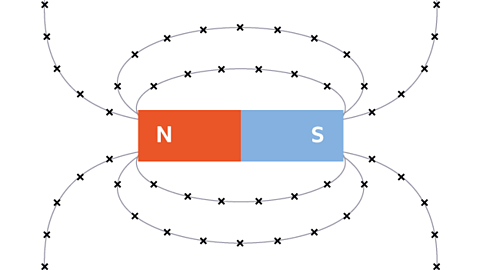
Image caption, Step 8
Keep repeating until you have marked out the magnetic field all around the magnet
1 of 8
Test your knowledge
Quiz
Teaching resources
Looking for more teaching resources to support your lessons on KS3 physics? From space lessons with Tim Peake to facts about the fastest skydive in history, head to the BBC Teach website for more resources.
BBC Teach has thousands of free, curriculum-linked resources to help deliver lessons - all arranged by subject and age group.
GCSE exam dates 2025
Find out everything you need to know about the 2025 GCSE exams including dates, timetables and changes to exams to get your revision in shape.

More on Electromagnetism and magnetism
Find out more by working through a topic
- count2 of 4

- count3 of 4

- count4 of 4
